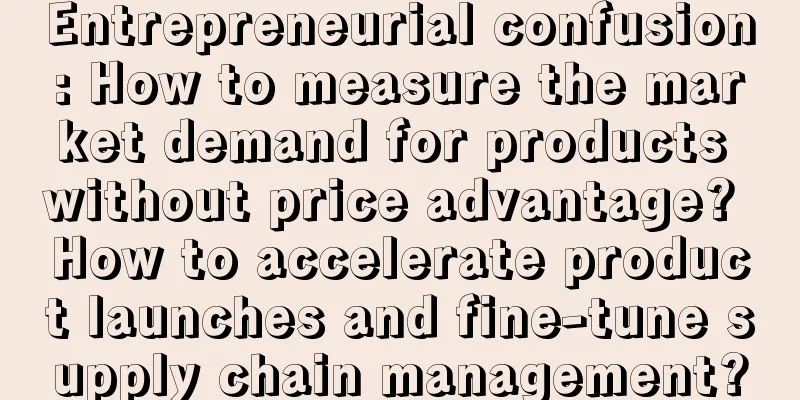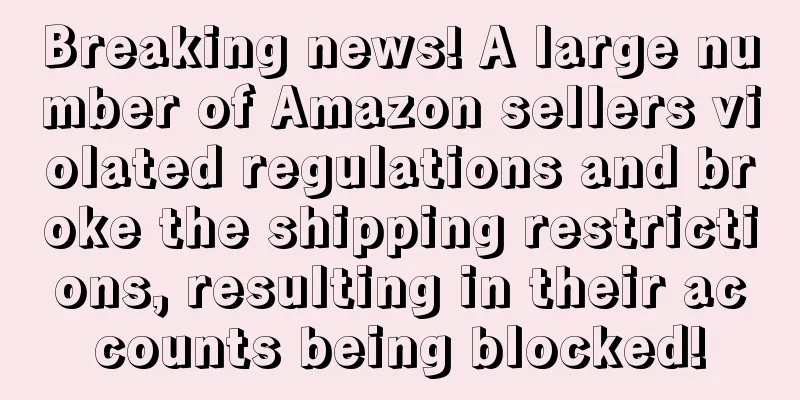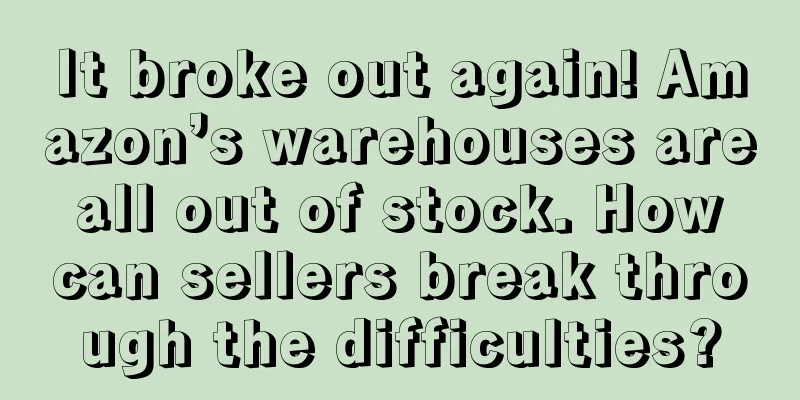|
Hello, UUs. I was born in the 1990s, and I have been working at Amazon for 4 years and working on my own for 3 years. I am good at selecting products in the [maternal and child life] category. Today I have a few questions about the speed of new product launches and the refinement of the supply chain. I hope to discuss them with you.
Let me first explain the situation: I selected a certain product in February at the beginning of the year, but the supplier did not deliver the goods until around May.
The following is the product timeline
February 17th Discover products February 22 Comparing supply chains February 25: The first supply chain sample (available but unsatisfactory workmanship) February 28 Second supply chain contact (for proofing) March 12th: First proofing confirmation March 20th Order contact (supplier does not check price before) March 23 Pay deposit April 12th: Confirm the bulk sample (color modification is involved between the proof sample and the bulk sample) April 30th, the bulk shipment
My question 1. How many months does it usually take from product idea to delivery?
2. From the timeline I gave above, which ones do you think we can subjectively advance on our own?
3. If the product needs to be differentiated, it needs to be sampled. The sample process basically takes a month from polishing, adjustment, and confirmation. If the product is not differentiated, testing the market first is basically not ideal without a price advantage. How do you solve the problem of [how to test market demand]? What products do you use for testing?
4. Since we are a small seller, one order is at most 500psc, and the supplier will delay the delivery progress indefinitely. How do you make the supplier deliver on time?
——In the actual process, suppliers often say that they made a mistake or that the supplier of auxiliary materials is not in place. At present, all I can think of is to make a good process sheet when confirming the sample, and confirm every detail and delivery time with the supplier.
5. You paid half of the price to the supplier for the mold, but the supplier transferred the mold to someone else and told you that they wanted to expand the market, get more price advantages, and meet your various personalized needs. How can you solve this problem?
——What I can think of is that in the future I will pay for the molds myself instead of splitting it in half with the supplier, so that I can have control.
6. After proofing, will you have a process sheet for comparing the first proofing sample with the bulk sample, or how do you confirm that the proofing sample is consistent with the bulk sample?
The above are the problems I encountered, and I hope to solve them together with you.
"Wonderful Reply"
Blingbling33 Agree with: Yajirobe, VictoryXue, Wearing Two Necklaces, Feifeifei's Feifeifei, colinsss more» 1. How many months does it usually take from product idea to delivery?
Mold making: Mold making takes at least 1 month, mold trial takes a week, and mold repair takes a week. The whole process takes at least 2 months to get the first version of the functional sample, plus the confirmation sample test sample, which takes about 3 months. Other simplified products also take more than 2 months (wood, iron, bag, etc.).
2. From the timeline I gave above, which ones do you think we can subjectively advance on our own?
The comparison samples must be viewed by multiple companies at the same time. This can prevent having to look for new ones if one of them fails. It took nearly 2 weeks to confirm that the proofing time was too long.
3. If the product needs to be differentiated, it needs to be sampled. The sample process basically takes a month from polishing, adjustment, and confirmation. If the product is not differentiated, testing the market first is basically not ideal without a price advantage. How do you solve the problem of [how to test market demand]? What products do you use for testing? Looking at cost testing, to put it simply, if the differentiation cost is low, you can directly do differentiation testing. If the cost is high, look for similar products with actual advantages (not limited to price and other functions) and private models, such as those released by several suppliers.
4. Since we are a small seller, one order is at most 500psc, and the supplier will delay the delivery progress indefinitely. How do you make the supplier deliver on time?
——In the actual process, suppliers often say that they made a mistake or that the supplier of auxiliary materials is not in place. At present, all I can think of is to make a good process sheet when confirming the sample, and confirm every detail and delivery time with the supplier.
After confirming all the details of the sample, ask the supplier for the delivery date. For example, if the supplier says 30 days, then you should write in your purchase contract that the delivery will be made before a certain date after the deposit is paid, otherwise it will be the same. However, you need to add about a week to the delivery time given by the supplier. That is, when replenishing stock, if the supplier says 30 days, you should treat it as 37 days. This way you can reserve some time for delays due to weather or other reasons and make yourself less passive.
5. You paid half of the price to the supplier for the mold, but the supplier transferred the mold to someone else and told you that they wanted to expand the market, get more price advantages, and meet your various personalized needs. How can you solve this problem?
——What I can think of is that in the future I will pay for the molds myself instead of splitting it in half with the supplier, so that I can have control.
If the mold cost is high and you need to share half, you should first confirm the BOM and ownership of the mold. If the ownership is in the factory, then negotiate to supply yourself first and then sell it to others after the sale. The price cannot be lower than the purchase price given to you. It depends on how many products the mold cost is spread over. When the total purchase quantity of you and other sellers exceeds the number of molds spread, half of the mold cost needs to be refunded to you. It is easier to handle if the ownership is in your hands. You have the final say.
6. After proofing, will you have a process sheet for comparing the first proofing sample with the bulk sample, or how do you confirm that the proofing sample is consistent with the bulk sample?
All proofing products must meet the standards of pre-production samples, except for packaging, which can be confirmed later. Otherwise, why would you place an order based on samples?
After the samples meet the standards of the pre-production samples, a deposit will be given. Before the supplier starts preparing materials for production, you need to give them two more sets of pre-production samples. You keep one set and sign one set back. Only after the signed samples are in the hands of the supplier can the factory start production based on the signed samples as the standard. After production, a bulk sample will be sent to you, and you can compare the pre-production sample with the bulk sample.
Anonymous user
Agree with: Super good luck answer:
1. How many months does it usually take from product idea to delivery?
This mainly depends on the difficulty of the product's workmanship. It may take half a year at most, or only one to two months to produce a large quantity of goods.
2. From the timeline I gave above, which ones do you think we can subjectively advance on our own?
February 17th Discover products
February 22 Comparing supply chains
February 25: The first supply chain sample (available but unsatisfactory workmanship)
February 28 Second supply chain contact (for proofing)
March 12 The first proofing and confirmation took too long. Generally, when you discover a product, you will understand the product's pain points or what types of new products have appeared on the market. Basically, you will have some ideas in your mind. It will be more purposeful to bring your own ideas and thoughts to find a supply chain. In addition, you will encounter some new products or ideas in the process of looking for supply chain resources. Basically, you can have some new things. These can be done simultaneously, and the advantages of the supply chain can be compared at the same time.
3. If the product needs to be differentiated, it needs to be sampled. The sample process basically takes a month from polishing, adjustment, and confirmation. If the product is not differentiated, testing the market first is basically not ideal without a price advantage. How do you solve the problem of [how to test market demand]? What products do you use for testing?
In the case of no customization or proofing, we must test the differentiated products in the supply chain. The cost is definitely not advantageous. We can only test the trend of market data and the coverage of promotion costs. If there are no differentiated products, we can consider adding accessories or appearance colors.
4. Since we are a small seller, one order is at most 500psc, and the supplier will delay the delivery progress indefinitely. How do you make the supplier deliver on time?
——In the actual process, suppliers often say that they made a mistake or that the supplier of auxiliary materials is not in place. At present, all I can think of is to make a good process sheet when confirming the sample, and confirm every detail and delivery time with the supplier.
Or it will appear in the order volume. This depends on your communication with suppliers. Suppliers will definitely give priority to their big customers. Unless you can talk to suppliers about your plans and talk about your optimism about the market, and give confidence to the factory, the benefits are mutual.
5. You paid half of the price to the supplier for the mold, but the supplier transferred the mold to someone else and told you that they wanted to expand the market, get more price advantages, and meet your various personalized needs. How can you solve this problem?
——What I can think of is that in the future I will pay for the molds myself instead of splitting it in half with the supplier, so that I can have control.
This question is similar to the fourth question. In summary, you use the factory to customize your product for you. The factory does the work and you pay. This is reasonable, but it also depends on whether the factory can do business and their principles. You don't have to hang your head on one tree. If the company has the courage to pay the mold fee and has a certain scale, it is definitely the best. In this way, the factory can give you a good degree of cooperation. This is a very realistic question.
6. After proofing, will you have a process sheet for comparing the first proofing sample with the bulk sample, or how do you confirm that the proofing sample is consistent with the bulk sample?
This must be compared, appearance and function comparison, the final sample shall prevail
To be honest, if a company wants to test a product, it cannot consider it for the purpose of profit, but should look at the market based on data and product prospects. If the company's first batch of goods is not large in volume, there are many product restrictions and the risk of out-of-stock operation is high, it will be difficult to promote the product. On the contrary, if the stock volume is large, the company will pay more attention to it, and it will be easier to negotiate various aspects of factory cooperation and product costs, and it will be easier to increase the volume. The above is purely my personal opinion.
Lucifer Park - Senior Seller in Chongqing Agree with: Life is full of sieges, crispy and crunchy bread, super good luck, passion makes achievements extraordinary, chenhai754 more » I think there is no big problem with your thinking logic, but it is quite limited.
If we are a small independent seller who does not have much ability to withstand pressure - meaning that we hope that the iterative and updated products we choose can give us a relatively satisfactory return, then we need to consider the so-called supply chain selection, finding a factory to make molds, non-cooperation in mold making, non-cooperation in delivery time, and problems with scattered molds, etc.
Think about it this way. After you have done all this, for example, when you place a second or third order, the factory finds that your order volume is increasing rapidly. Two situations may occur:
1. He told his previous clients that this product was better, and asked if they would like to try it too. 2. He does it himself. In the above two situations, the vendors who have no ability to withstand pressure are powerless to resist, I hope you understand this.
Let's talk about the issue of private models being used for public purposes. My family has been engaged in the auto parts business for more than 20 years, and I have also worked in many factories. In front of traditional factory owners, there is not much difference between your so-called public models and private models. The only difference is that if I use your public models privately without being discovered by you, it does not count as being used. The constraints of the moral system and business ethics are almost gone after the huge rent, raw material costs, workers' wages, and local government maintenance costs are deducted.
So my personal suggestion is: if you are a small seller, try not to do things that require differentiation or that require too much effort and money (because the investment and risk are likely not inversely proportional). Just take the spot goods and bargain with the factory. Some factories will do a little more. Try to bargain with others after the product has been recognized by the market, because you are a small seller and the profit is all yours, while the operation of the big seller takes commissions, so the higher the profit, the better.
There is also the issue of communicating with factories. These days, as long as you pay on time, factories are willing to accept requests that are basically not too unreasonable, so don't worry about factories not cooperating. China has a lot of factories, not a lot of things.
020Atlantis - The most fundamental thing about this matter is... Agree with: Operation with Monthly Sales of One Million Dollars, Crispy and Crunchy Bread, Passion Leads to Extraordinary Achievements, Lily521, mufey1993 I used to work on hardware products. As a novice developer for 2 years, I understand:
1. The product took 5-6 months from 0-1-FBA. Of course, there were some delays, such as product design-sample adjustment-repeated adjustments;
2. Finding suppliers to get samples or make samples can be done by multiple suppliers at the same time, which can shorten the time by about a week. Large factories basically do not care about small orders. It is good to find one with good quality and good cooperation, and the price will naturally be higher;
3. I am a little confused as to why the market demand test here is called a test. Testing is too risky and there are traces to follow (for example, if the standard size is too small, customers will say it is too small). If you want to figure out the demand on the site, you can only look at the comments. The fastest and lowest cost way to make a difference for a standard product is to change the appearance/add some added value, for example, make black white/add two more hooks to a shelf. There is basically no price advantage for re-customization (ignore the mature supply chain resources here), unless your re-customized product meets the core/potential needs of customers and can raise the selling price;
4. Same as 2
5. Regarding this, I think it depends on the specific mold fee. If it is cheap, you can pay for it in full but there is no guarantee that the factory will sell it to others. After all, the mold is not with you. For this problem, I think the best way to protect yourself is: if the feedback of the private mold product is good, directly apply for a patent and don't tell the factory. Even if this company does not make your single patent, you still have it in your hands;
6. The quality of the samples is definitely better than the bulk goods. When making the contract, the quality inspection part should include both the good and bad samples.
THERESIME - EVENNO Agree with: VictoryXue, I have food and you have wine, million-dollar monthly sales operation, any123456, monichim more » As a small developer who has worked in a factory for half a year, I can only answer 4 or 5 of your questions. I am not capable of answering the rest.
Answer 4: Even if you are a small seller, you still have to sign a contract with the supplier. Without a contract, you pay the supplier and they can do whatever they want. You must be bound by the contract. (Most of the factory's business has terms that delay your delivery date, so there must be a contract to clearly define the obligations and responsibilities of both parties, and the delivery should be made when it is due.)
Answer 5: As Party A, when will it be your turn for the supplier to paint a rostrum for you? You are just blazing a trail for the factory. Many factory owners are very smart now. They don’t have any product line development on their side. They completely use the sellers to open up the market for them and try and make mistakes. Once a product made by the seller becomes popular and successful, he will also succeed. I don’t recommend that the factory connect the private mold products made by yourself to others. (Emphasis, this must be bound by the contract) Cross-border Lu Pangzi • Shenzhen • 2024-05-22 11:39 You are absolutely right. Many factories have no sense of contract at all. If you just make a verbal agreement without any contractual constraints, you are just paying the factory to make molds and expand the market.
Cross-border ten-year slacking king - welcome friendly exchanges Agree from: any123456 My suggestion is to make it clear at the beginning that we are all in a cooperative relationship. The only time you can optimize is during the period of finding the supply chain and making samples. It is recommended to visit the factory in person. Many factories listed online are actually middlemen.
Depending on the craftsmanship, the proofing fee is not high. It is recommended that you pay for it yourself. If you do it together, you need to write down the terms and conditions and how long it will take to return the money. Because the factory itself also has business connections with many companies, we will recommend new products to them. The better ones will modify your order. Some factories will also tell you how much other companies have ordered and how the samples are.
Before placing an order, ask clearly how long the delivery time will be. We usually add 7-15 days by default. This can be clearly stated in the contract. You don't have to follow the 30 days the supplier says. You can add a week or so. Communicate with the factory about the progress when the period is halfway through.
Beibei 1. It usually takes 2 to 3 months to ship. It took you 2 and a half months, which is normal.
2. In your timeline, the proofing was confirmed on March 12, so why did you wait more than a week before placing the order? Did you adjust the sample again? It is recommended to "cultivate feelings" with the supplier from time to time, such as liking a post on WeChat Moments. This will also help him remember your order.
3. In my experience, there is no point in doing anything without differentiation. Even if you catch up with a hot-selling product, it will soon disappear after three months, unless your supply chain and your operational level can allow you to take the lead and firmly occupy the top spot.
4. The contract should specify the delivery time and include a breach of contract compensation clause. However, in reality, many suppliers may not be willing to sign with you, especially if you purchase a small amount of goods.
5. We directly negotiated that it was a private mold, and we paid the mold fee in full.
6. The final delivery of the bulk product is basically the same as the finalized product after proofing. Occasionally, there are some minor problems in the production process. If the impact is not great, we will send it for testing first and modify it in the second batch.
If Wu Yong is not mediocre, he will send you a friend. Agree with: VictoryXue, The cat cutting paper in the alley, Taptain, Pika Pika All proofing products must meet the standards of pre-production samples, except for packaging, which can be confirmed later. Otherwise, why would you place an order based on samples?
After the samples meet the standards of the pre-production samples, a deposit will be given. Before the supplier starts preparing materials for production, you need to give them two more sets of pre-production samples. You keep one set and sign one set back. Only after the signed samples are in the hands of the supplier can the factory start production based on the signed samples as the standard. After production, a bulk sample will be sent to you, and you can compare the pre-production sample with the bulk sample.
| 









